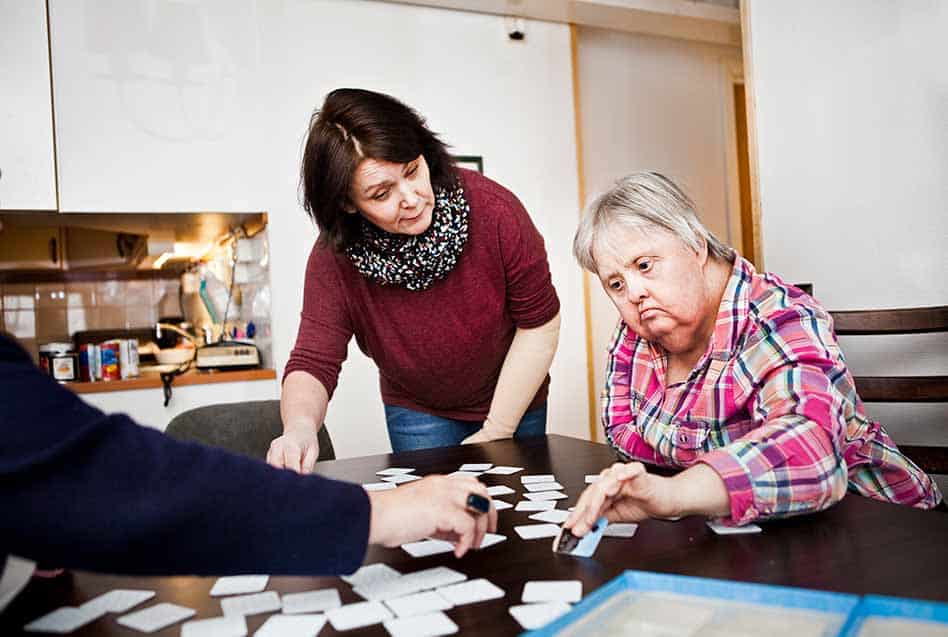
Level four group homes are for those with severe disabilities. Living with someone who has severe disabilities can be challenging, especially if you are an aging parent with an older child who requires 24/7 care. Luckily, there are different levels of support available for families in need.
A level 4 group home is a 24-hour non-medical home that provides around the clock care and mental health support for children and adolescents ages 10 to 17, as well as adults ages 18 to 59 who have severe discrepancies in self-help skills, physical coordination, disorderly or self-harming behaviors.
Below, we will discuss what a level 4 group home is and how it can benefit those in dire need.
So, Exactly What Is a Level 4 Group Home?
A level 4 group home caters to individuals with complex health needs who:
- Cannot live with their families
- Afford their own home
- May even have dementia or other age-related illnesses
These facilities are typically set in a home-like environment, with an on average of four to six residents per home. They also have at least one trained caregiver 24 hours a day – one morning shift caregiver and one night shift caregiver. Alternatively, there may be two caregivers per six residents 24 hours a day, with two morning shift caregivers and two night shift caregivers.
The ratio of caregivers to residents depends on the state’s Department of Health. However, some homes may have more caregivers per resident than what is recommended. (Source: http://www.sgprc.org/Home/ShowDocument?id=108)
What Are Some Things to Check for and Consider When Choosing a Home?
When it comes to finding the right home, keep in mind that not all homes are created equally.
Therefore, here are some things to check for before deciding on the best home for yourself or a loved one.
The first, and what might be the most important thing to consider, is the type of training the staff and caregivers have received. Just because the facility is licensed, does not mean they fully know how to properly handle certain situations.
It is always a great idea to contact your state’s Department of Health to find out what type of license requirements are needed.
Once you have that information, contact the group home to find out more about the training and licensing they obtain. This will help you decide whether or not they are a good match for you or your loved one.

Next, find out about the demographics of the people living in the home. The activity level of the home may be based on the age of most of the residents living in the home. For example, seniors living in a residential facility may want to relax and enjoy more quiet time while on the other hand, younger adults may want to be more active, listen to music, or play video games.
Therefore, it is always a good idea to try to find out what the social environment is like for the home you are interested in.
Another thing to consider is that most homes are either non-profit or profitable organizations.
Researching the home’s organization will give you a great idea about:
- Who they are
- What their soul mission is
- How active they are in the community
A home that has a great deal of community involvement most likely has more funds and support coming in than a home that is less active within the community.
More funds potentially mean better care to be given as well as:
- More modern advancements
- Better paid attendants
- Better qualified staff
Lastly, research what the employees are saying about the home you are interested in. This will give you a huge leverage when choosing the right home.
A great way to do this is by looking at websites with employee reviews such as:
Visiting sites such as these can give you a feel for the organization – what is important to them, how well they care for their staff, the pros and cons of working there, as well as the wages.
If the workers are overall unhappy and not satisfied with the leadership or pay, and there seem to be more cons than pros, then you might want to reconsider if it’s really the best option.
A lot of negative comments and reviews are typically a sign of higher turnovers which can do more harm than good when it comes to you or your loved one’s livelihood.
Studies show jobs with higher satisfaction rates usually have employees who are not only dedicated and committed but also, more involved with their job. Which, at the end of the day means you or your loved one will be better cared for.
What Are the Goals for an Individual Living in a Level 4 Group Home?
The goals of a successful group home are generally centered around effectively getting each resident back on his or her feet.
The long-term goal is to get each resident to the point where they not only can live and function independently on their own but also have jobs they can sustain and where they will thrive. Some find success with the continual influence of outside support, such as counseling and therapies.
These long-term goals include, but are not limited to:
- Encouraging independence
- Focusing on health – mental and physical
- Building a self-esteem
- Providing job experience
Some short-term goals for certain residents might be to:
- Eventually get them into a lower group level or level of care, such as a level 3 or a level 2, then eventually to a level 1.
- Provide them with the necessary skills where they would still be closely monitored while obtaining more independence.

Level 4 Group Home for Children and Adolescents Ages 10-14
Conditions That Must Be Met to Qualify
Children with the most severe treatment needs and behavioral problems are considered for level 4 care.
Most of these needs and behavioral problems may be related to the presence of severe emotional, cognitive, or developmental delays or disabilities. Here are some examples of the level 4 group qualifications:
- Refusing to follow directions and adapt to the structure of home, school, or outside community, as well as frequently being dismissed or suspended from school.
- Persistent violent arguments with not just the caregivers, but siblings, teachers, and peers, as well verbal aggression.
- High risk for self-harm, endangerment to others, and in some cases, sexual misconduct.
Typical Number of Residents
Level 4 group homes are designed within the community and typically have four to six occupants. However, some homes may have more. There are at least two staff members for every six residents.
Care Offered
The staff of a level 4 group home is trained in a range of methods to help keep everyone, including themselves, safe while addressing the different obstacles and defense mechanisms these children have developed.
The home is staffed 24-hours a day, broken up into two twelve-hour shifts: a day shift and a night shift.
The children and adolescents require continual support in order to complete day to day living.
Some also require around-the-clock supervision due to behavior that may be hazardous to his or her-self, as well as others. These involve behaviors such as aggression – which in some cases can lead to the use of restraints or seclusion, in order to keep everyone safe.
Although most level 4 group homes provide long-term care, some residents eventually develop the necessary skills to move into a more independent living situation.
Group homes for children are usually temporary placements, providing care until they can return to their natural families or until a foster family can be secured.
Therapy Available
Treatment programs will include 8 hours or more of individual therapy each week.
These sessions are an incredibly important part of helping the child have a better life. Many of these facilities use a merit-based system wherein youth can earn privileges based on positive reinforcement of desirable behavior.
There may be more levels of safety protocols in such a treatment facility including the use of approved restraints if necessary. All of those policies and procedures should be explained to you before your child attends.
Gaining the trust of individuals at this level can be difficult and time consuming. As a result, the program could take several weeks before they are introduced to group counseling.
Throwing a new resident into group counseling would not benefit them in any way as they would be unwilling to share feelings or information with others. It would also risk the safety of others in the group at that point in time.
Regular evaluations will be performed, in order to see how the child is progressing, and to determine if the adolescent can be moved down to lower levels of care as they continue their progress.

Level 4 Group Home for Adults Ages 18-59
Conditions That Must be Met to Qualify
Adults are considered for level 4 care when they exhibit the most severe insufficiencies in:
- Self-help skills
- Physical coordination
- Disorderly and self-harming behaviors
Typical Number of Residents
Similarly to the youth, adult Level 4 group homes are designed within the community and typically have four to six occupants; however, some homes may have more. There are at least two staff members for every six residents.
Care Offered
The staff of a level 4 group home is trained in a range of methods to help keep everyone including themselves, safe.
The home is staffed 24-hours a day, broken up into two twelve-hour shifts: a day shift and a night shift.
Like the youth in level 4 programs, these individuals require continual support in order to complete day to day living.
Some also require around the clock supervision due to behavior that may be hazardous to his or her-self, as well as others. Behaviors such as, various types of aggression, which in some cases can lead to the use of restraints or seclusion, in order to keep everyone safe.
Although most level 4 group homes provide long-term care, some residents eventually develop the necessary skills to move into a more independent living situation. Whether it be a level down, living with family or living on their own, with the help of outside therapies.
Therapy Available
Treatment programs will include a minimum of 31 hours each month.
The risk of self-harm, as well as harm to others is greatly minimized with this amount of support. Regular evaluations will be completed, in order to see how the individual is progressing.
The ultimate goal is to be able to determine if the resident can be moved down to lower levels of care, or in some cases move in with family, or live on their own, as they continue their progress.
Making the Level 4 Decision is Hard!
At the end of the day, it can be hard and stressful when trying to choose the right home with the appropriate care for yourself or a loved one.
Know your options, review the facts, research, and talk to others before settling. Mostly, just know help is out there for those who need it.
